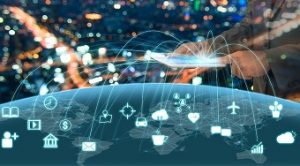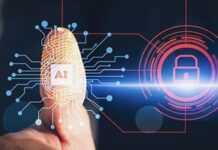
Worldwide, hours of digital video are generated every second. Now, with the proliferation of Internet of Things (IoT) sensors, even more data is being created for the purpose of improving our situational awareness. In less than four years, it is predicted that only about 50 percent of the streams feeding into video management systems will come from fixed cameras. The other inputs will be streams from various types of sensor, both fixed and mobile, visual and non-visual. One prime example is in Singapore, where video cameras and other sensors are being installed on smart lamp posts to collect a wide range of data for uses such as management of traffic or to catch speeding drivers. The question is, how will we manage this data and information in the most smart, secure way?
With such an overwhelming amount of data being created, humans can’t do it alone. Therefore, intelligent video utilising AI and Machine Learning will become a vital tool for analysing and categorising IoT-generated data. That said, this isn’t a task that intelligent technologies can handle alone either. Therefore, the solution is to combine machine intelligence with human judgement.
Intelligent machine learning technologies are now bringing video content analysis far beyond the capabilities of legacy video analytics systems. Traditionally, such systems were rule-based, meaning they required a human programmer to set fixed parameters for each situation that the system must recognise, evaluating a few pre-defined scenarios. For example, areas within a camera’s view can be defined as “restricted zones”, so if a trespasser is detected in those areas it will trigger an alert.
In comparison, AI-based intelligent video content analysis technology can learn directly from the video about objects, their relationships with each other and what defines normal behavior. Known as “behavioural analytics”, the system self-learns without prior programming and learns to normalise the visual data. This makes it possible to intelligently identify objects and classify situations. The system will be able to automatically understand what is normal behaviour and alert the operator to unusual activities, leading to predictive systems in the future.
So, there can be no doubt that with the use of intelligent learning technologies to help us analyse the data generated from IoT network devices, technology is bringing a wealth of new opportunities to organisations worldwide.
Entering new territory through the application of technology does, by nature, raise doubts about whether that technology can in fact be trusted. It is a fair point, but as a rule we need visual confirmation of the data generated from IoT devices, and video will be a crucial tool to provide this. Having both device data and video is the foundation for combining machine intelligence with human judgement. When the machine is uncertain, it can flag the situation for human intervention. With video to guide their reasoning, humans can either confirm the machine’s decision, or guide the process to a different outcome.
One example is when a network sensor alarm goes off in an offshore windmill park. In a typical situation, a maintenance crew would be sent out to investigate and fix the problem. However, this is costly and time-consuming. Now, with video providing visual confirmation of the problem, it is possible to use video technology as the eyes on the ground, identifying the causes of the trigger. This streamlines the process and cuts down unnecessary time and resources as the management can now decide whether a crew needs to be sent out or check if the problem can be solved remotely. As Asia has seen record investments in offshore wind installations in recent years, the use of video technology will benefit these future wind farms once they’re completed in future.
As more and more data are generated from IoT sensors, processes will increasingly be monitored and controlled by IoT network devices. Regardless, we still need human beings to make the final judgement of the data provided, and leverage video data in this process to convert data into visual insight. Combining machine intelligence with human judgement is a prerequisite for making the most of IoT-generated data. There is no doubt that video will be the foundation for humans to trust this data in the future.
Bjørn Skou Eilertsen,
Chief Technology Officer, Milestone Systems












